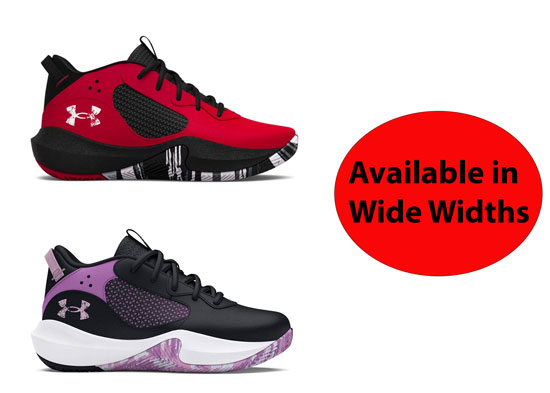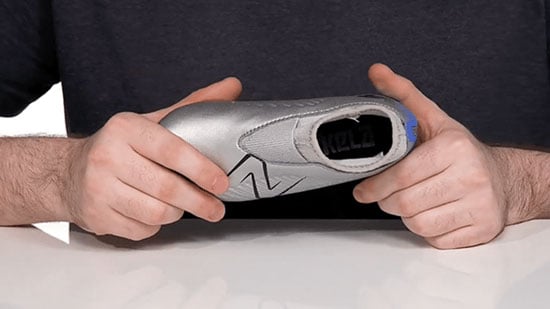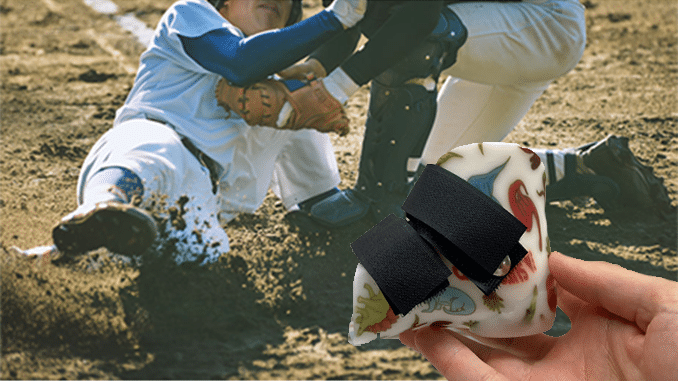How to Prevent Blisters for Kids Who Play Soccer – Extra Cushion and Padding

Blisters are common when children play soccer, but the good news is that they’re preventable. My goal is to show you a list of soccer cleats and socks that will help your children keep playing the game they love without the pain and setbacks of blisters. I am a shoe fitter with over a decade of experience and I’ll share practical advice that centers on preventive care—because stopping blisters before they start is the best strategy. If your child already developed a blister, we will look into how well-fitted cleats with extra cushion and padding paired up with padded socks can help minimize discomfort.
Most Common Places Where Children Develop Blisters
1️⃣ Back of their heels: When it comes to blisters, the heels take the brunt of the impact during play. That’s why cleats with extra padding and cushion around the heels can be game-changers for kids. The fit of the cleats is crucial to prevent blisters around the heels.
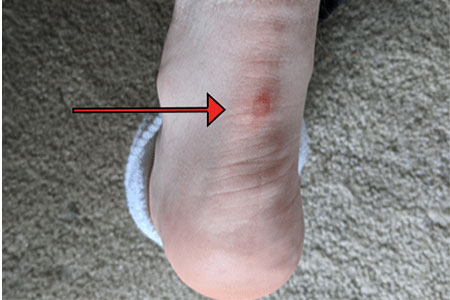
2️⃣ Small toe (pinky toe): This is the second most common place where children develop blisters when playing soccer. It’s important that your kids’ soccer cleats provide extra deep and round toe-boxes to help prevent the small toe from rubbing against the side of the shoes.
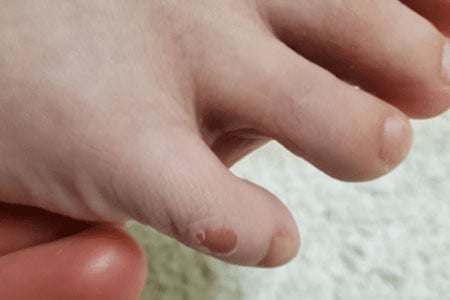
3️⃣ Below the big toes: This happens when there is excessive movement inside the cleats and the insole of the cleats is not properly padded. I have developed blood blisters below my big toes and had to stop playing soccer for several weeks.
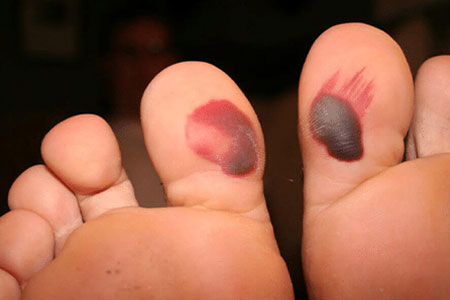
Developing blisters in any of these three spots can have your child sidelined for a couple of games.
First Things First: The Importance of Getting the Right Fit
To get the correct shoe size, you must first know your child’s exact foot length and shape (narrow, medium, wide, extra wide, high instep). When cleats are too big, your child’s feet slide around, creating friction. Too small, and the constant pressure can wreak havoc on your child’s skin. So, securing well-fitted cleats is vital for your child’s comfort and performance.
The fit of your child’s cleats should be your TOP priority. Start by getting your child’s feet professionally measured at your local children’s shoe store. If you don’t have a specialized children’s shoe store, you can take advantage of a free resource I created that helps families retrieve their children’s shoe size from home.
Your child’s cleats should have about a thumb’s width of space beyond the longest toe and the end of the shoes, but tight enough at the heels to prevent significant movement. Once you’ve tackled the fit, it’s time to step up the game with additional protection for those heels.
What Makes the Soccer Cleats I Recommend Ideal to Prevent Blisters?
✔️ Extra padding and cushion around the heels: Children who play soccer are running, jumping, and performing lateral movements on the field. Their foot naturally shifts within the shoe so improved cushioning in the heel area creates a barrier against the repeated friction and rubbing that can lead to those dreaded blisters. Below you can find the difference in cushioning and padding between one of the cleats I recommend (right image), and a different style.
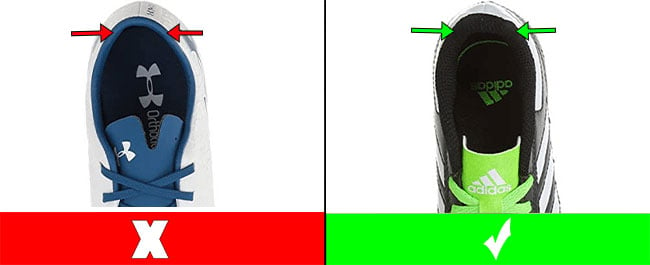
✔️ Round toe-boxes: This feature is going to help prevent your child’s toes from overlapping and rubbing against one another or the side of the cleats. Most cleats tend to have a narrow/pointy toe-box.
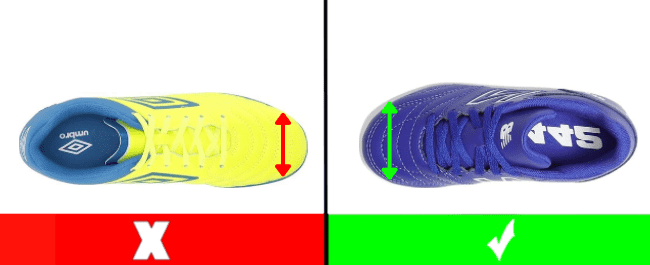
✔️ Cushioned insoles: This feature is going to help prevent blood blisters below the big toes. When children play soccer, they make sudden stops that put a lot of extra pressure on the big toes.

Best Soccer Cleats with Extra Padding and Cushion
Read the description below of each soccer cleat that I recommend to find out if it can fit your child’s foot shape. Disclosure: Some links in this post may be affiliate links and we may receive a small commission (at no extra cost to you) when you click our links and make purchases.
- Shoe style 442 V2 Academy by New Balance
- Available in medium and wide widths
- Lace-up closure for a secure fit
- Comfortable lining to improve the first foot feel
- Order this shoe a whole larger than your child’s current foot size
- Shoe style Football Boots by MiFeloo
- Fits medium and wide feet
- The double velcro strap closure allows kids to put-on and take-off these soccer shoes by themselves and provides a secure fit
- This cleat can be used in artificial ground, firm ground, or hard ground
- Order this shoe a whole larger than your child’s current foot size
- Shoe style by Zephz
- Available in wide and extra wide widths
- Padded collar to increase comfort and prevent blisters
- Lace-up closure
- Order this shoe a half size larger than your child’s current foot size
- Shoe style Predator by Adidas
- Works well for children with wide feet and high insteps
- Lace-up closure for a secure fit
- Comfortable lining to improve the first foot feel
- Order this shoe a whole larger than your child’s current foot size
- Shoe style Firm Ground Soccer by Asoco
- Fits medium and wide feet
- Double velcro straps
- Soft padded tongue
- This cleat can be used in artificial ground, firm ground, or hard ground
- Order this shoe a whole larger than your child’s current foot size
- Shoe style by Zephz
- Available in wide and extra wide widths
- Extra padding around the ankles
- Lace-up closure
- Order this shoe a half size larger than your child’s current foot size
- Shoe style Soccer Cleats by T&B
- Fits medium and wide feet
- Double velcro closure for easy on and off
- Traction outsole designed for superior ball control on turf or any firm ground
- Order this shoe a whole larger than your child’s current foot size
- Adidas shoe style Goletto VIII
- Not available in wide widths but fits naturally wide
- Cushioned heels
- Firm heel counters
- Order this shoe a whole larger than your child’s current foot size
- Adidas shoe style Goletto VIII
- Not available in wide widths but fits naturally wide
- Cushioned heels
- Firm heel counters
- Order this shoe a whole larger than your child’s current foot size
Lace-Up for Safety: Prevent Your Child’s Feet From Moving Excessively
I strongly recommend getting laces instead of an alternative closure such as velcro or slip-on shoes. Your child’s soccer cleats might have all the cushioning in the world, but if the foot isn’t securely held in place because the laces or straps aren’t snug enough, blisters can still be a problem. Laces can provide an adjustable and snug fit without being too tight. If you prefer to provide your child with a pair of soccer cleats with velcro closure, I suggest getting a style with double velcro straps instead of single ones.
I have a coworker who has over 20 years of shoe fitting who taught me a specific shoe lacing technique that works wonders in preventing heel slippage and blisters. This specific lacing technique pushes the foot back, securing it against the back of the shoes. I suggest that you try it in your child’s cleats and even your sneakers to see what a difference it makes!
Loose footwear is like a shoe without a mission. It may seem trivial, but a shoe that doesn’t do its job to keep the foot snug can result in more than discomfort; it can sideline your child with painful blisters. If you definitely don’t want cleats with laces for your child then there is a different article I created that has a list of soccer cleats with velcro closure. I strongly suggest looking only at the styles with double velcro straps.
Once the cleats arrive, make sure that when your child tries on cleats, have them wear the socks they’ll play in. Pay attention to your child’s feedback. If they mention any discomfort, consider a different size or brand.
What Socks Work Best to Help Prevent Blisters?
Padded socks are key players in this process, cushioning the feet and reducing friction. They provide more than just comfort, they’re a strategic defense against blisters. It’s vital to choose socks with the right level of padding, especially in areas prone to blisters such as the heels and toes. Take a look at the image below for better visualization purposes:
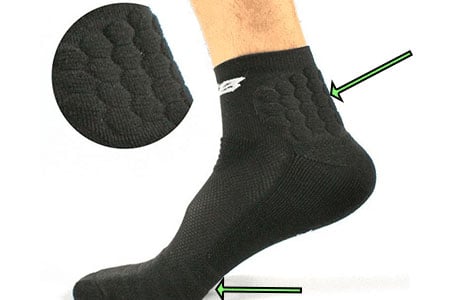
Remind Your Child to Remove the Socks After the Games
Switching off the socks is just as crucial as lacing up the cleats before the match. Why? Because it allows your child’s skin to dry and recover, halting the damp environment where blisters thrive. You should allow your child to either go barefoot or bring an extra pair of socks in the car. Ensure they wash their feet to cleanse away any dirt and bacteria accumulated during playtime to prevent any infections that could complicate blisters.
Another helpful tip is to remind your child to double-check their laces or straps before heading out to practice or a game.
If your child does end up with a blister, make sure it’s treated appropriately. Keep the area clean, protected, and consult with a healthcare provider if necessary.
I hope you find this resource helpful! I will be here to answer any questions or concerns that might come up. You can either contact me via email or through the comments section below and I will get back to you as soon as possible.










